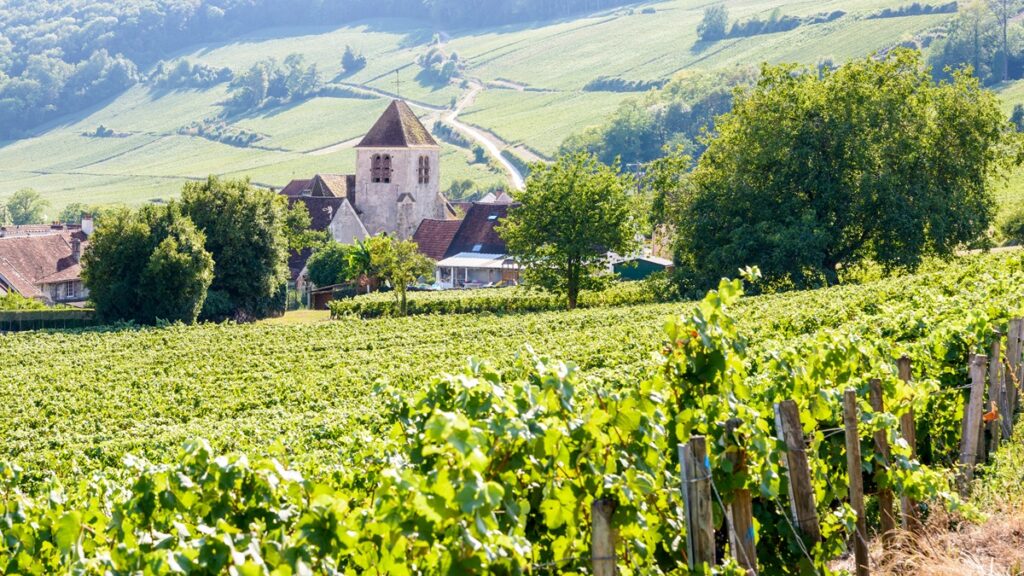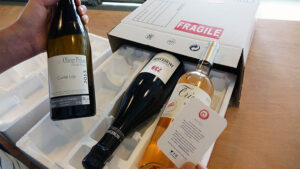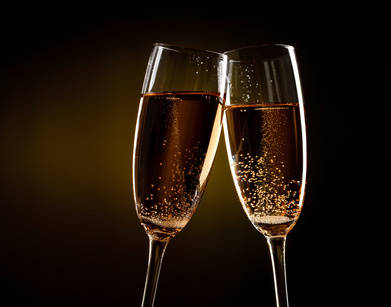
Champagne… Long before it was a wine region, the mere mention of which conjures images of fine bubbles tinkling in our glasses, Champagne earned its prestigious reputation from the French and European royal courts as monarchs were crowned in the cathedral of Reims, located in the area. As a result, the Champagne region and its secret cellars attract widespread admiration, though perhaps a little too much. That’s why iDealwine is casting the spotlight on a selection of houses and estates, both renowned and lesser-known, that go under the radar but are well worthy of your attention. Here are five cuvées that will bewitch your senses.
CUVÉE JEANNE BRUT PREMIER CRU FROM VIRGINIE BERGERONNEAU
- About the estate
Virginie Bergeronneau is still a little-known name, but one that discerning connoisseurs already know well, including Michel Bettane and Thierry Desseauve, who brought her to our attention. Ever since, our team has become loyal consumers, savouring her wines. Social gatherings, birthdays, Christmas … any occasion is an opportunity for us to enjoy some of these fine bubbles.
So, what is there to say about this talented young winemaker? Virginie Bergeronneau runs her estate in Villedommange, in the Marne Valley, where she nurtures her vines following HVE 3 (High Environmental Value level 3) sustainable principles. Her winemaking methods are precise, reflecting her ambition to produce terroir-driven wines. And she succeeds brilliantly as her wines are both refined and flavoursome. Their prices remain moderate, not to say pleasing, which is a real bonus in this golden region.
- What we recommend…
The cuvée Jeanne Brut Premier Cru, without the slightest hesitation. Its gentle character (like the other cuvées named Adèle, Ernestine and Marcelle) is a tribute to the women in the family who once worked unnoticed in the shadows of the vines.
Jeanne is a blend of the region’s typical grape varieties – Pinot Noir, Pinot Meunier and Chardonnay – which have drawn all the necessary nutrients to thrive from the clay and limestone soils. A 27-month bottle ageing period on laths has refined its energetic, fruity profile. An exquisite wine to relish.
- What’s the extra sparkle?
The French wine magazine Bettane+Desseauve awarded it a 17/20 rating: ‘Ingeniously combining rich fruit and flavours drawn from the terroir. Sapid, intense and well crafted.’
BRUT NATURE FROM DRAPPIER
We can’t imagine talking about Champagne without mentioning the Drappier family which holds a special place in our hearts. A long-standing partner of ours, we will never be able to thank them enough for placing their trust in iDealwine right from the beginning of our online wine-related venture. You may also remember that in 2019, we headed out to visit the estate’s cellars, discover all its production secrets … and enjoyed a barbecue lunch cooked by one of the family’s sons in the garden. We certainly haven’t forgotten the wonderful and copious amount of chocolate mousse, no doubt requiring a great deal of effort from our hosts.
- About the estate
But let’s get back to viticulture and winemaking. The family has been established in the heart of the Côte des Bar since the early 19th century and owns some forty hectares of vines. This is the birthplace of a wine that was already greatly appreciated by the late General Charles de Gaulle. Here, Pinot Noir reigns supreme, complemented by Chardonnay and Pinot Meunier.
What do we particularly like about Drappier? Their approach to winemaking which is wholly unique. What do we mean by that? Well, the second fermentation occurs in the original bottle. This, combined with extremely long maturing periods, produces complex wines that can be cellared for years on end.
- What we recommend…
The Brut Nature cuvée, a tribute to Pinot Noir, delivers a flavoursome, vinous style perfectly suited to a variety of bold dishes.
How was it crafted? Fermentation is triggered by natural yeasts, there is no filtration and the wine undergoes malolactic fermentation before maturing on laths for three years.
We absolutely love its fullness, beautiful substance, generous fruit and fine bubbles.
- What’s the extra sparkle?
High marks were awarded across the board: 16/20 RVF, 90/100 Robert Parker, 16/20 Jancis Robinson, 92/100 Wine Spectator…
ESPRIT BRUT NATURE FROM HENRI GIRAUD
- About the estate
Have you ever heard of this estate? It benefits from centuries of expertise passed down over thirteen generations and has around ten hectares of vines to its name. Additional grapes are sourced from partners with common values. Sure, but which ones? Most notably, authenticity. This means that both Pinot Noir and Chardonnay grapes are cultivated sustainably and vinification is carried out with as little intervention as possible.
Most importantly, the estate has maintained the same permanent reserves since 1990, malolactic fermentation is routine, ageing is carried out in barrels made of oak from the Argonne Forest in Champagne, and bottle pressure is limited to craft wines with fine bubbles.
- What we recommend…
Esprit Brut Nature is a Champagne that has a distinctive woody profile, a hallmark of the family. Pinot Noir accounts for the majority of the blend, complemented by 30% Chardonnay harvested in the Montagne de Reims wine region. A delightful fruitiness reminiscent of fresh pears and peaches brings plenty of vitality to the ensemble.
- What’s the extra sparkle?
These professional ratings should be persuasive enough for you: 17/20 Jancis Robinson, 92/100 Robert Parker, 91/100 Decanter…
MÉTISSE BRUT NATURE FROM OLIVIER HORIOT
- About the estate
Time for us to head to the Côte des Bars to (re)discover a rising star, a wine producer with a genuinely unique and special flair. You’ll find him in the heart of Les Riceys, a village well known for three still wine appellations for rosé (AOC Rosé des Riceys), red and white (AOC Coteaux Champenois). This is where Olivier Horiot works relentlessly following biodynamic principles, cultivating his vines of Pinot Noir (predominantly), Chardonnay, Pinot Meunier and, more unusually, Pinot Blanc and Pinot Gris, as well as Arbanne and Petit Meslier.
The winemaking techniques used in the cellar are equally rigorous, increasingly plot-specific and very similar to those used in Burgundy. As a result, the wines boast considerable personality, much like this winemaker we wholeheartedly recommend…
- What we recommend…
The Métisse Brut Nature offers a delightful blend of Pinot Noir (80%) and Pinot Blanc which have extracted the very essence of the Kimmeridgian marl and clay soils through meticulous cultivation. In the cellar, the one-year ageing period on fine lees is punctuated by bâtonnage. This method consists in stirring the residual yeasts that have settled at the bottom of the barrel to bring them back into suspension, imparting substance, intense flavours, and powerful aromas to the wine.
- What’s the extra sparkle?
We especially enjoy it at the table since its fleshy fruit, oxidative, pastry, and buttery notes promise delightful pairings with characterful fish, scallops, or even a white meat in a sauce.
BRUT RESERVE FROM LECLERC-BRIANT
- About the estate
Everyone seems to be talking about the revival of the Champagne region and its estates and houses, increasingly inclined towards sustainable, organic and biodynamic viticulture. Did you know? Leclerc-Briant is one of the pioneers. In 2010, after the passing of its eponymous owner, the estate was taken over by an American couple with a passion for the French Art de Vivre. Together with Hervé Jestin and Frédéric Zeimett, they run a 15-hectare estate following organic and biodynamic principles, under the influence of leading winemakers such as Olivier Horiot (fancy that…), David Leclapart and Hugues Godmé.
In the cellars, the vinification process is deliberately plot-specific to produce unique terroir wines. In the same spirit, dosage is low. Ageing periods are lengthy, and the resulting harmony is superb…
- What we recommend…
Experience their special savoir-faire with the Brut Réserve. You’ll appreciate the influence of Pinot Noir, Chardonnay and Pinot Meunier, reflected in the wine’s structure, fresh, honeyed notes and fullness.
- What’s the extra sparkle?
Oh la la… Such incredible ratings! 16.5/20 RVF and Jancis Robinson, 92/100 Wine Spectator and 90/100 Decanter.
RUINART, VEUVE CLICQUOT, JACQUESSON, OUR MOST FAMOUS SPARKLERS
What was that? Fancy some more? No problem! Champagne makes us feel generous. Explore the crayères (chalk cellars) of the leading French Champagne houses, including the those belonging to Ruinart and Veuve Clicquot, both of which are listed as UNESCO World Heritage Sites.
- R de Ruinart: a non-vintage Brut (BSA in French) blending the three flagship regional grape varieties (Chardonnay, Pinot Noir and Pinot Meunier) produced by one of the oldest Champagne houses in the region.
- Brut Réserve from Veuve Clicquot: Pinot Noir and Pinot Meunier complemented by 30% Chardonnay. This cuvée, matured over a long period, immerses us in the exciting, audacious and innovative world of this Champagne House, which owes its renown to Barbe Nicole Clicquot Ponsardin, who greatly contributed to the region’s vineyards in the 18th century.
Finally, this is an excellent opportunity to reminisce about the visit Elsa, our Marketing and Communication Manager paid to Jacquesson, when the company was still run by the Chiquet brothers. We suggest you consider the Cuvée 746 Extra-Brut. This is a blend of Chardonnay, Pinot Noir and Pinot Meunier with limited yields, produced according to organic principles and vinified on lees in oak foudres (large wooden tuns). This complex, intense wine is the expression of the 2018 vintage.



